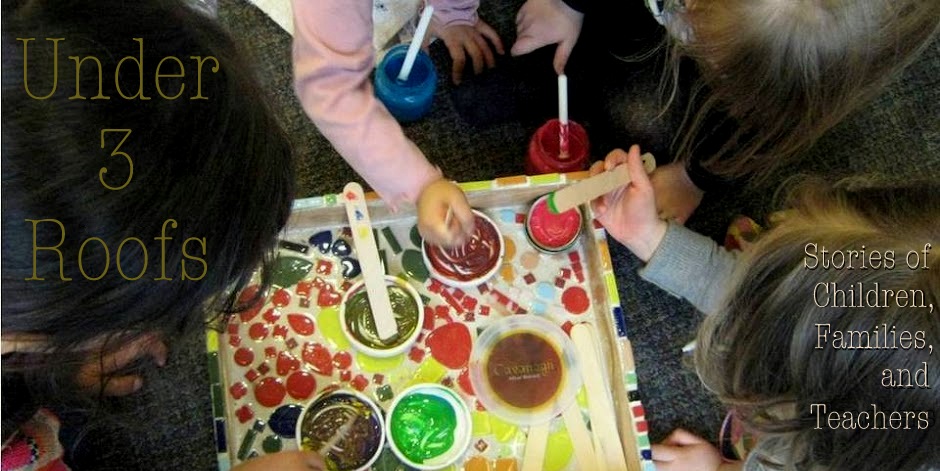The following is the third and final part of a series of posts illustrating the ways our teachers took on the different principles of project work last year. Click here to find the first part and the second part.
Bring the small group work back to the larger group and find ways to integrate the work into larger classroom life.
Bring the small group work back to the larger group and find ways to integrate the work into larger classroom life.
From the early stages
of her group’s music project, Serena encouraged the budding musicians to share their work with
their classmates (and our resident musician, Wayne). In the beginning, their
experience of performing a song in progress allowed them to get some feedback
to help them improve. Later, they worked to catalog important vocabulary
words and use them to write new songs, one of which they also performed for
their classmates and parents. As their vocabulary became more nuanced and
consistent, Serena encouraged them to share their new system as useful tool for
other songwriters in the classroom. Through this practice, the work of denoting
and writing new songs has spread into the greater culture of the classroom,
adding new focus to a general interest in music making.
Choose your small
groups carefully, thinking about their relationships to the concepts and with one another.
When Tracy was considering the
composition of her sea monster group, she took into account the different
possibilities that the project held for each child. For some children, the
experience would help them practice listening to others’ ideas and integrating
them into their own. For others, it offered the possibility of a leadership
role – getting to speak up and gain confidence as an “expert” on sea monsters.
In her careful formation of the group, Tracy brought together
children who had normally not played together much before, but who shared an
interest in sea monsters and could benefit from each others’ strengths. Among the group, there were storytellers,
artists, safety advocates, and trap-builders, each working to make the lore of
the sea monsters richer through their contribution. In bringing together this
diverse group of children, Tracy not only helped build a successful project group - which they collectively named Team Blueberry Pickle - but also
helped to foster new friendships and a greater sense of community throughout
her classroom.
Stay curious about what you observe.
We were unsure what project work would
be like for babies and young toddlers, but we were certain that our teachers
would find ways to collaborate with some of our youngest citizens. While Cathy watched how babies played with balls and ramps for inklings of
understanding, Eileen studied friendship, reflecting upon the
demonstrations of empathy and fondness that she saw to draw her conclusions. Brae thought long and hard about how babies communicate with sign
language and then with speech. She wondered why children chose one mode of
communication over another. This team had deep, thoughtful conversations about
their projects, and how they could continue to explore side-by-side with
babies. On the other hand, when Henna joined the Toddler Two North team in
the middle of the year, she had to build new relationships with the children in her
class, while also listening for that special spark of interest that indicates
that a topic might be worthy of deeper investigation. She knew that food held a
special fascination and offered a number of different ways for the children in
her class to relate to it. She was persistent in her study of the children in
her care and their relationship to food, and offered a number of different and
delicious provocations to her class.
Celebrate and honor the children’s work by ending it in some meaningful
way.
As our year (and our projects) come to
an end, we are excited to see what celebrations unfold for these many projects.
Clearly these children and teachers will continue to learn more, about the
workers in their community, about how buttons influence the world around us or
how to communicate with one another. However, one way that we honor children's
collective exploration is by following the waxing and waning of their interest
- by helping their work together form a shape with a beginning, middle and an
ending. Part of the practice of progettazione in Italy, and the projects that
happen elsewhere in Boston and all over the US, is to recognize the work that's
happened, look at it as a whole, and celebrate it with families and children.
In the final weeks of our school year, teachers, families and children marked
this moment, honoring the learning they did and relationships they built. Seana planned a plane-decorating party for her paper airplane group, Carmel and Aline invited families to co-create a bird
guide that will live on in our center, and Miwako’s
group invited their classmates and parents to the final performance of the play
they created, to name a few. What a wonderful end to an amazing year!




